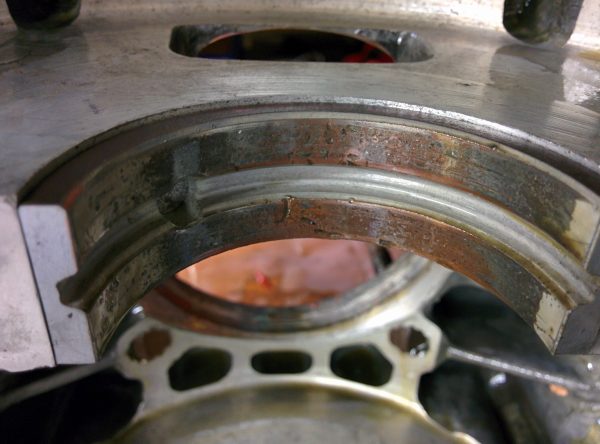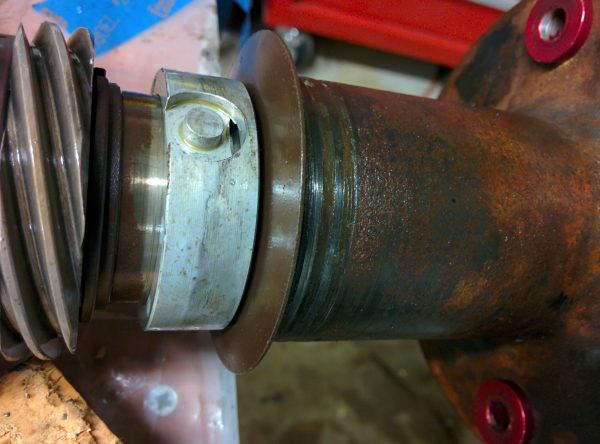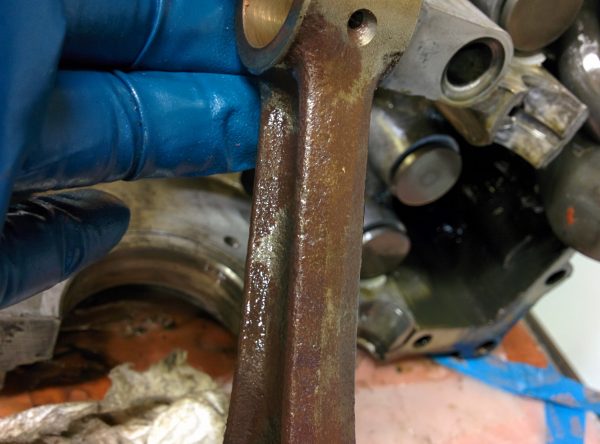Since the last post, I’ve taken everything off the AeroVee and split the case. It could be worse. The cams and lifters look OK. The bearings, though, do not. And the long periods of disuse has caused a fair amount of corrosion on the connecting rods and the crankshaft.

The center bearing, looking pretty bad. It has a lot of gouges and the top layer looks worn through.
All the bearings look pretty bad, both on the inside and the outside. There are also wear marks in the bearing saddles in the case. The bearings have clearly been moving around. The center bearing above has clearly has had a lot of wear, and the corresponding crankshaft journal is worn to about 0.02mm below the spec diameter with a “ridge” in the middle where the oil groove is visible with the naked eye.
I don’t know whether the orange color is copper (looking at the edges I don’t think these bearings have a copper backing) or rust particles embedded in the bearing shell.

The prop hub end of the crankshaft is all pretty corroded. The oil slinger and distributor gear as well as at least part of the front bearing surface is covered in rust. Since there is no seal at the front of the engine, this is probably a prime way for moisture to enter.
The front bearing journal is rusted, although maybe not under the bearing itself. You can’t see the condition of the front bearings since the prop hub has to be pressed off before you can take them off. Clearly the prop hub end of the engine, which has no seal, is a route for moisture to enter. I think that as the plane is parked, rainwater will run along the bottom of the prop shaft, in through the hole in the case, and then drip off the oil slinger and collect in the sump. Seems like an aspect of the design that was not completely thought through…

All the connecting rods are rusted. It’s not clear yet whether that’s just surface rust or if it’s actually pitted the surface.
The connecting rods are also rusted, as seen in the picture above. I haven’t tried to polish it off to see how deep it is, but connecting rods are highly stressed parts and corrosion pits can act as stress risers. There have been cases of connecting rod failures in airplanes that have sat unused for long periods of time due to fatigue cracking initiating in corrosion pitting, so this is a bit disconcerting. New rods aren’t that expensive so we may replace them just to be on the safe side.
Speaking to our local VW shop, it appears no one grinds crank journals anymore, it’s just not worth it given the low price of new parts. Since our crank appears to be clearly out of spec, that means we need a new crank. This is a pretty expensive part, so that’s disappointing.
I’m going to clean all the parts up and take them down to the VW shop next week so they can take a look. Luckily align boring is not that expensive, so the case should be usable.
More later.
Pingback: Engine guts part 2 – Patrik's projects